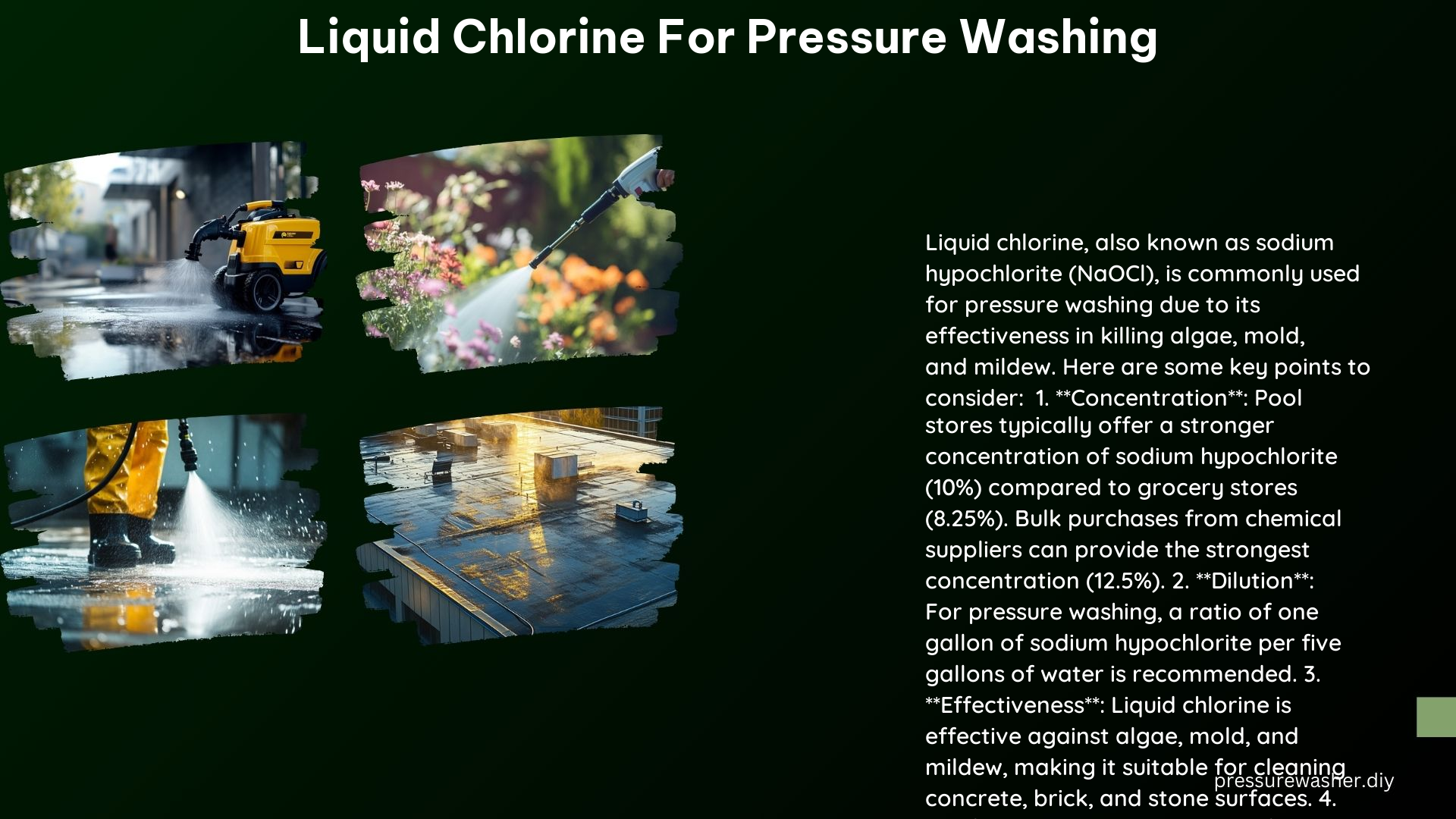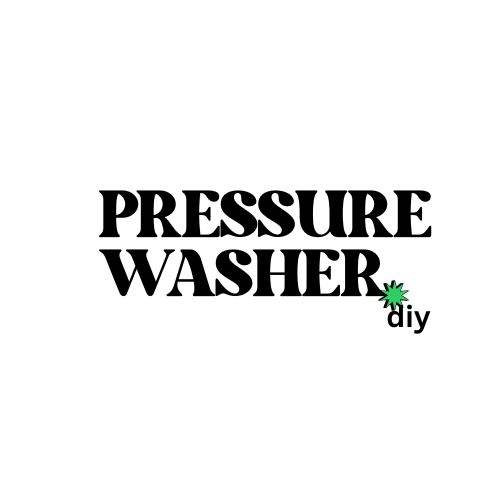Liquid chlorine, also known as sodium hypochlorite (NaOCl), is a widely used and highly effective cleaning agent for pressure washing a variety of surfaces, including concrete, brick, stone, vinyl siding, and painted surfaces. This comprehensive guide will provide you with the technical specifications, safety precautions, and best practices for using liquid chlorine in your pressure washing operations.
Recommended Ratio of Liquid Chlorine to Water
The optimal ratio of liquid chlorine to water depends on the surface being cleaned and the desired level of disinfection. Here are the recommended ratios for common applications:
| Surface | Chlorine Concentration |
|---|---|
| Concrete, Brick, and Stone | 2% sodium hypochlorite (1 part chlorine to 49 parts water) |
| Vinyl Siding and Painted Surfaces | 0.5% to 1% sodium hypochlorite (1 part chlorine to 99 parts water or 1 part chlorine to 199 parts water) |
| General Cleaning | 1 part chlorine to 5 parts water (20% chlorine solution) |
It’s important to note that these ratios are guidelines, and you may need to adjust them based on the specific conditions of your project, such as the level of dirt, grime, or organic growth on the surface.
Soaking Time Before Rinsing

The recommended soaking time for the chlorine solution also varies depending on the surface and the level of contamination. Generally, it is advised to let the solution soak for:
- Concrete, Brick, and Stone: 10 to 15 minutes
- Other Surfaces: 5 to 15 minutes, ensuring the solution does not kill algae instantly, which would indicate it is too strong
Allowing the appropriate soaking time ensures the chlorine has sufficient contact time to effectively clean and disinfect the surface.
Removing Mold and Mildew
Liquid chlorine is a powerful tool for removing mold and mildew from various surfaces. It is particularly useful for cleaning areas with heavy mold and mildew growth, as it can help prevent their return. When using chlorine to remove mold and mildew, it is essential to follow the recommended ratios and soaking times to ensure the solution is effective without causing damage to the surface.
Safety Precautions
When working with liquid chlorine for pressure washing, it is crucial to take the following safety precautions:
- Wear Protective Gear: Always wear safety glasses, chemical-resistant gloves, and a respirator or mask rated for chlorine exposure to prevent skin and eye irritation and inhalation of chlorine fumes.
- Avoid Mixing with Acid or Ammonia: Mixing chlorine with acid or ammonia can produce chlorine gas, which is highly toxic and can be fatal if inhaled.
- Use the Correct Ratio: Ensure that you use the recommended ratio of chlorine to water to avoid over-concentration, which can damage surfaces or cause health issues.
Technical Specifications
Liquid chlorine, or sodium hypochlorite (NaOCl), is typically available in concentrations ranging from 10% to 15% available chlorine. It is a corrosive substance that requires careful handling and storage. When using liquid chlorine for pressure washing, it is essential to follow the manufacturer’s instructions and safety guidelines to ensure safe and effective use.
Disposal
After using the chlorine solution for pressure washing, it is crucial to dispose of the remaining solution properly to avoid environmental harm. The best practice is to empty the solution into a dry area away from water sources, such as a grassy or sandy area. Alternatively, you can consult with a professional waste management service for guidance on the proper disposal methods in your local area.
Advantages of Using Liquid Chlorine for Pressure Washing
Using liquid chlorine for pressure washing offers several advantages:
- Effective Disinfectant: Chlorine is a powerful disinfectant that can effectively kill bacteria, algae, and other microorganisms on the surface being cleaned.
- Cost-Effective: Compared to other cleaning agents, liquid chlorine is relatively inexpensive, making it a cost-effective option for pressure washing.
- Easy to Use: Chlorine can be easily added to the pressure washer’s water tank and mixed with other cleaning agents if desired, simplifying the cleaning process.
By following the guidelines and safety precautions outlined in this comprehensive guide, you can effectively and efficiently use liquid chlorine for pressure washing a wide range of surfaces, ensuring optimal cleaning results and protecting both the environment and your own safety.
